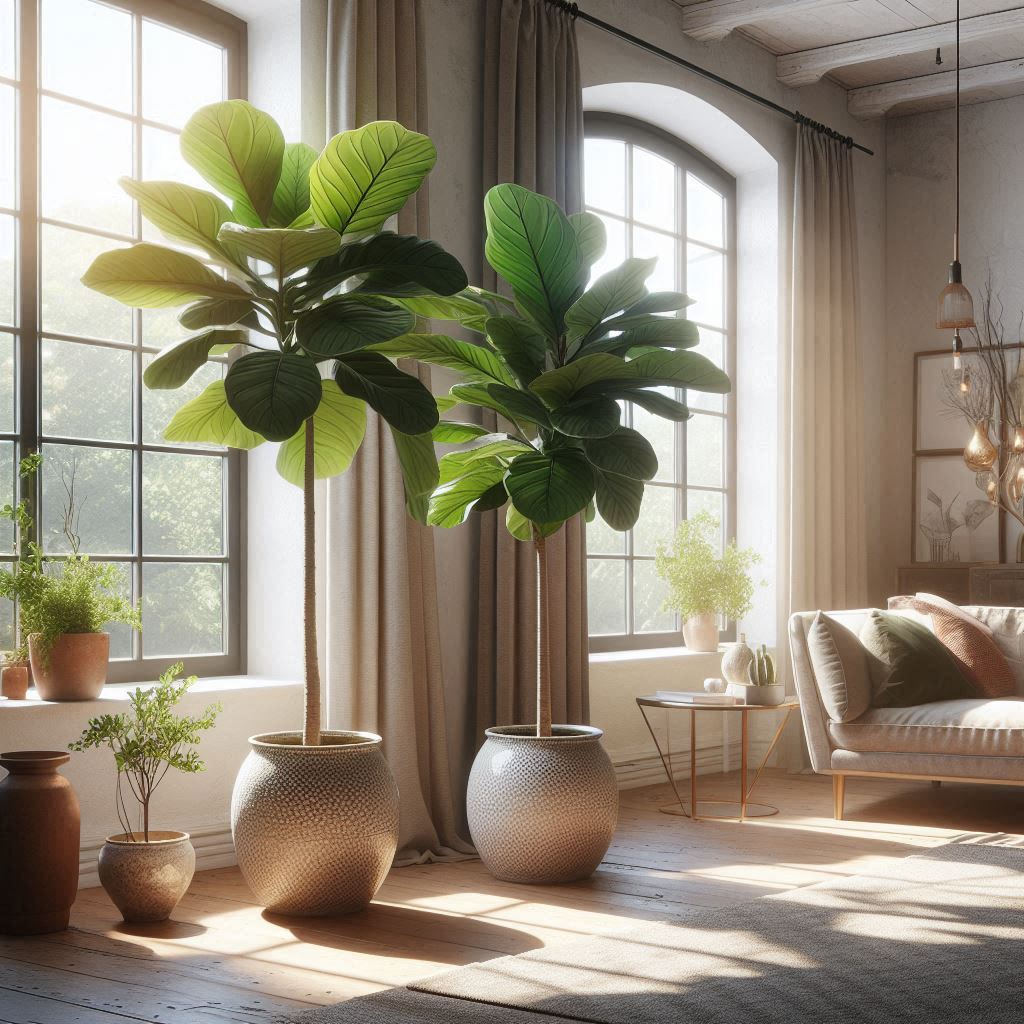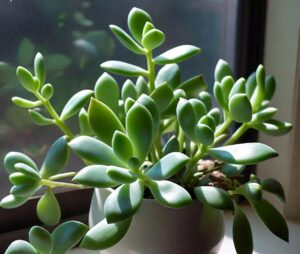Everything You Need to Know About Fiddle Leaf Fig Trees:

Introduction, Care, and Advantages The Fiddle Leaf Fig (Ficus lyrata) is a well-liked houseplant because of its impressive height and large, violin-shaped leaves. Local to the tropical rainforests of West Africa, this shocking plant has turned into a number one among inside originators and plant fans. This guide will go over everything you need to know about growing and taking care of a Fiddle Leaf Fig tree to keep it healthy and attractive.

What is a Fig Tree with Fiddle Leaves?
The fig tree species known for its striking foliage is the Fiddle Leaf Fig. The leaves are enormous, lustrous, and can grow up to 18 inches long and 12 inches wide. Its striking appearance and capacity to adjust to indoor conditions make it a profoundly pursued plant for the two homes and workplaces.
Benefits of Having an Attractive Fiddle Leaf Fig Tree: The Fiddle Leaf Fig stands out in any room thanks to its striking, sculptural leaves.
Air filtration: In the same way as other different houseplants, Fiddle Leaf Figs assist with further developing indoor air quality by retaining poisons and delivering oxygen.
Temperament Improvement: The Fiddle Leaf Fig is an excellent choice for offices because it has been shown to improve mood and productivity when grown indoors, according to research.
Natural humectant: Fiddle Leaf Figs help to maintain indoor humidity levels by releasing moisture into the air.
Instructions to Really Focus on a Fiddle Leaf Fig Tree
Light Prerequisites
Fiddle Leaf Figs flourish in splendid, aberrant light. Your plant should be near a window that gets a lot of sunlight, but direct sunlight can burn the leaves. Consider supplementing with a grow light if natural light is insufficient.
Watering
Water your Fiddle Leaf Fig when the top inch of soil feels dry. Root rot can result from excessive watering, so it’s important not to overwater. To prevent the plant from sitting in water, make sure the pot has holes for drainage and empty the saucer after watering.
Soil and Potting Use a potting mix that drains well, like a mix of pine bark, perlite, and peat. Repot your Fiddle Leaf Fig each 1-2 years or when it becomes root-bound, regularly throughout the spring.

Temperature and Humidity Fiddle Leaf Figs thrive in moist conditions between 60 and 75 degrees Fahrenheit (16 and 24 degrees Celsius). In the event that your house is dry, increment stickiness by moistening the leaves routinely or utilizing a humidifier.
During the growing season (spring and summer), feed your Fiddle Leaf Fig with a balanced liquid fertilizer every month. When the plant’s growth slows down in the fall and winter, reduce its feeding.
Pruning and Upkeep
Prune your Fiddle Leaf Fig to keep up with its shape and eliminate any dead or harmed leaves. Pruning the plant on a regular basis helps it grow in a healthy way and keep the size it wants.
Engendering Fiddle Leaf Fig Trees
Engendering Fiddle Leaf Figs should be possible through stem cuttings. To ensure successful propagation, follow these steps:
Pick a Solid Stem: Select a sound stem with something like two leaves and cut it just under a hub.
Place in soil or water: The cutting can be rooted directly in soil or in water. If you want the cutting to root in water, put it in a jar filled with water and change the water every few days. Roots ought to foster inside half a month. In the case of establishing in soil, plant the cutting in a little pot with well-depleting soil and keep it wet.
Create the right conditions: Make certain that the cutting is exposed to bright indirect light and that it has high humidity.
Common Issues and Possible Solutions Brown Spots on Leaves Brown spots can be an indication of fungal infections, underwatering, or overwatering. Change the way you water the plant and make sure it has enough drainage. Use a fungicide on the plant if you think it might have a fungal infection.
Hanging Leaves
Hanging leaves can be an indication of deficient light, ill-advised watering, or temperature stress. Really look at your plant’s current circumstances and make fundamental changes.
Leaf Drop
Leaf drops can happen because of changes in light, temperature, or dampness. Avoid abrupt environmental shifts and gradually acclimate your plant to any changes.
End
Fiddle Leaf Fig trees are a striking expansion to any indoor space, offering both tasteful and medical advantages. These plants can flourish and produce impressive specimens with proper care. This guide has all the information you need to keep your Fiddle Leaf Fig healthy and vibrant, no matter how new you are to gardening.
By following these tips and resolving normal issues, you’ll be well en route to partaking in the excellence and advantages of a Fiddle Leaf Fig tree in your home.

